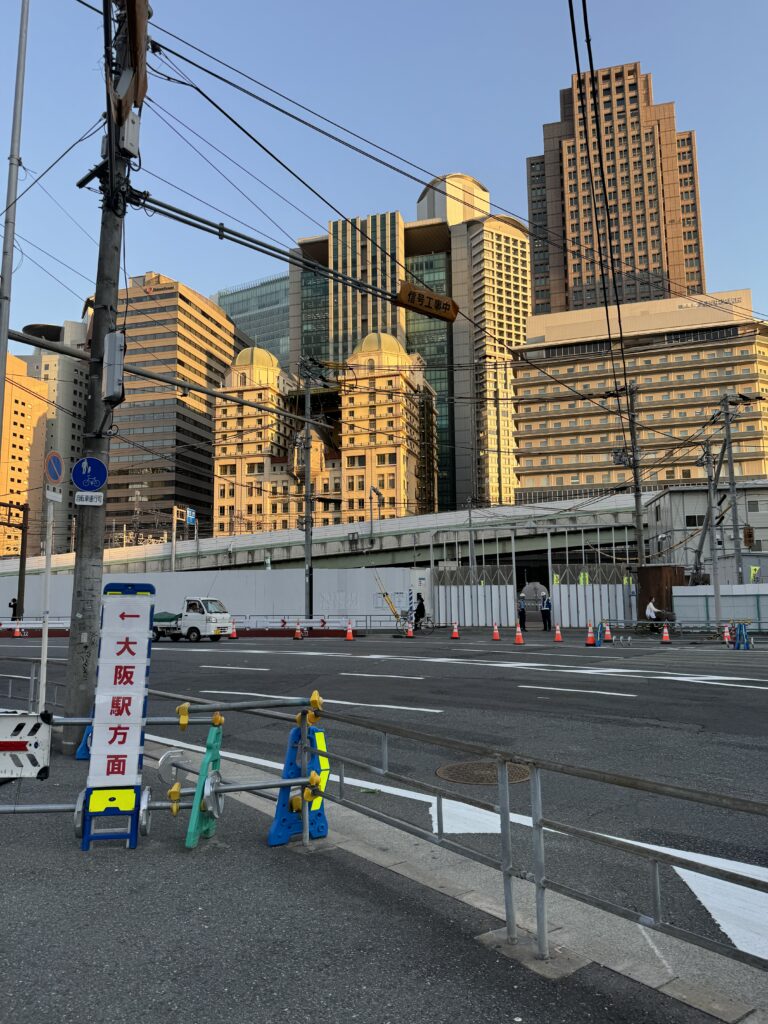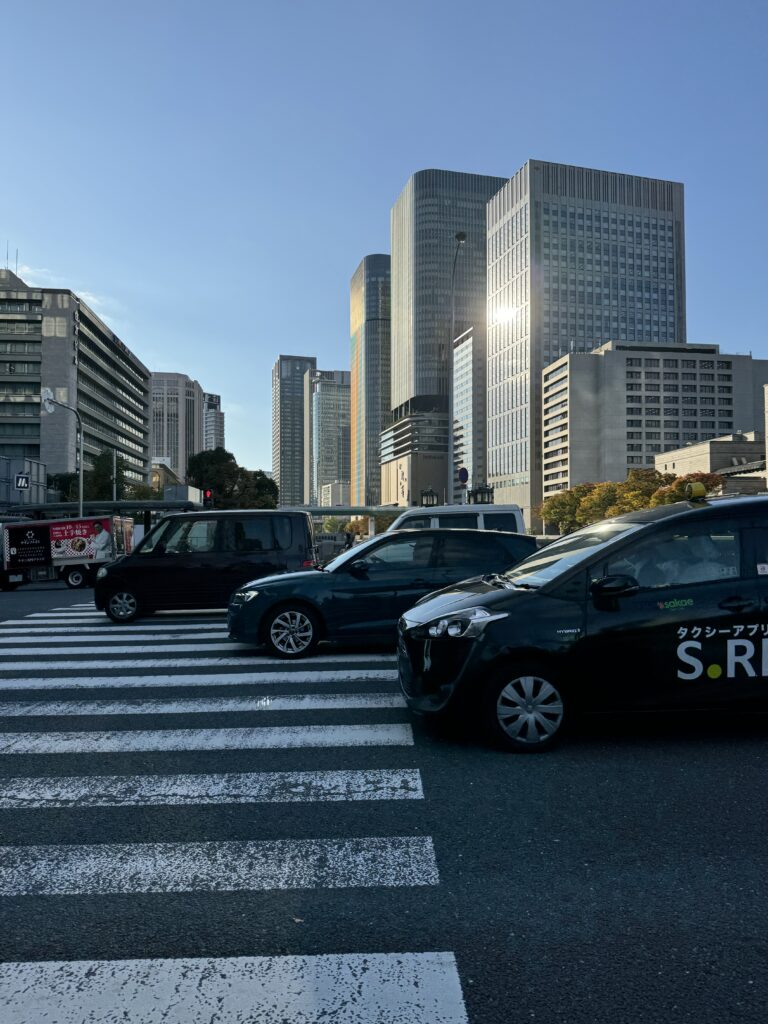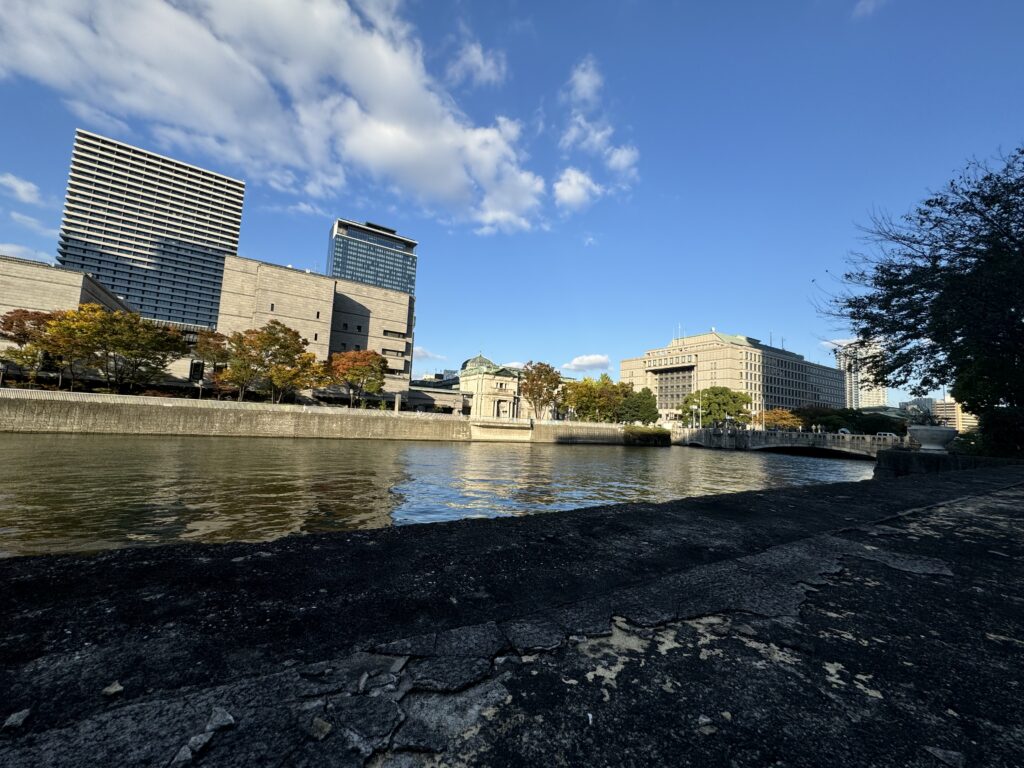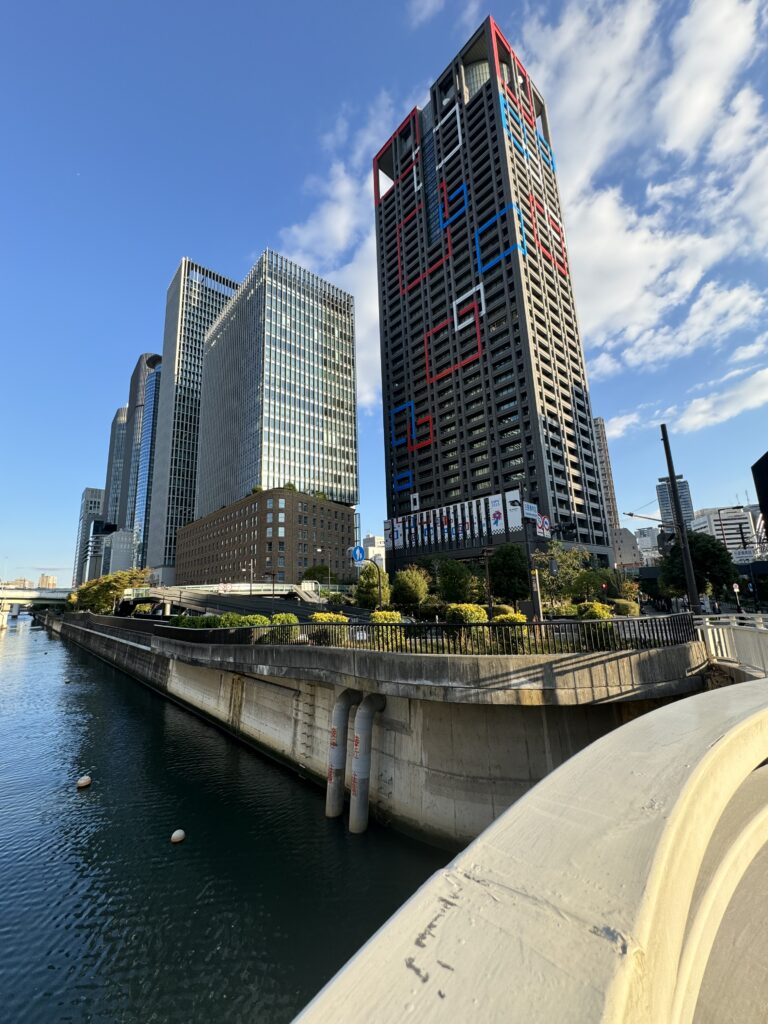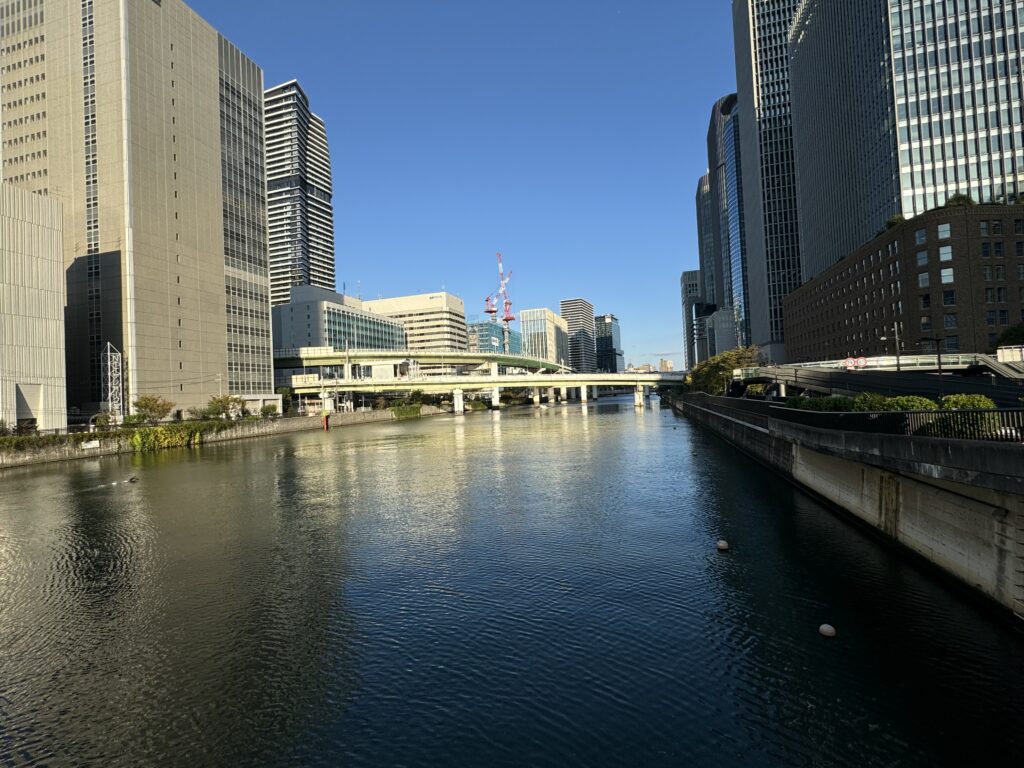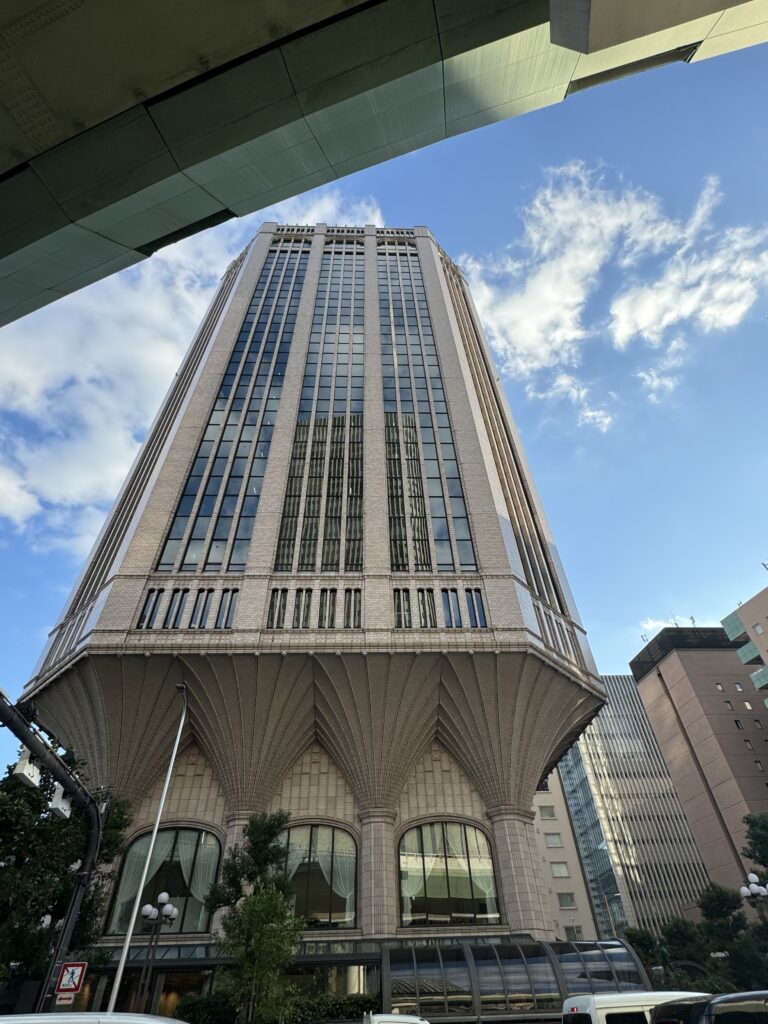We meet again, old friend. You’ve changed a bit. There’s Christmas lights decorations, and a lot of building works. I did get to practice my ‘good morning’ with the super polite lady in a high vis jacket outside the building site – all in preparation for the Osaka 2025 Expo. Mind you, I’d have loved to say something like: ‘lovely weather we’re having today, aren’t we. Should be easy for the cement to dry…’ seeing that I don’t know the word cement, I just had to satisfy myself with bowing. It must have gone down well, as we repeated this every morning and I felt like I, too, was going to work with everyone else. Just less stressed, and more stroll.
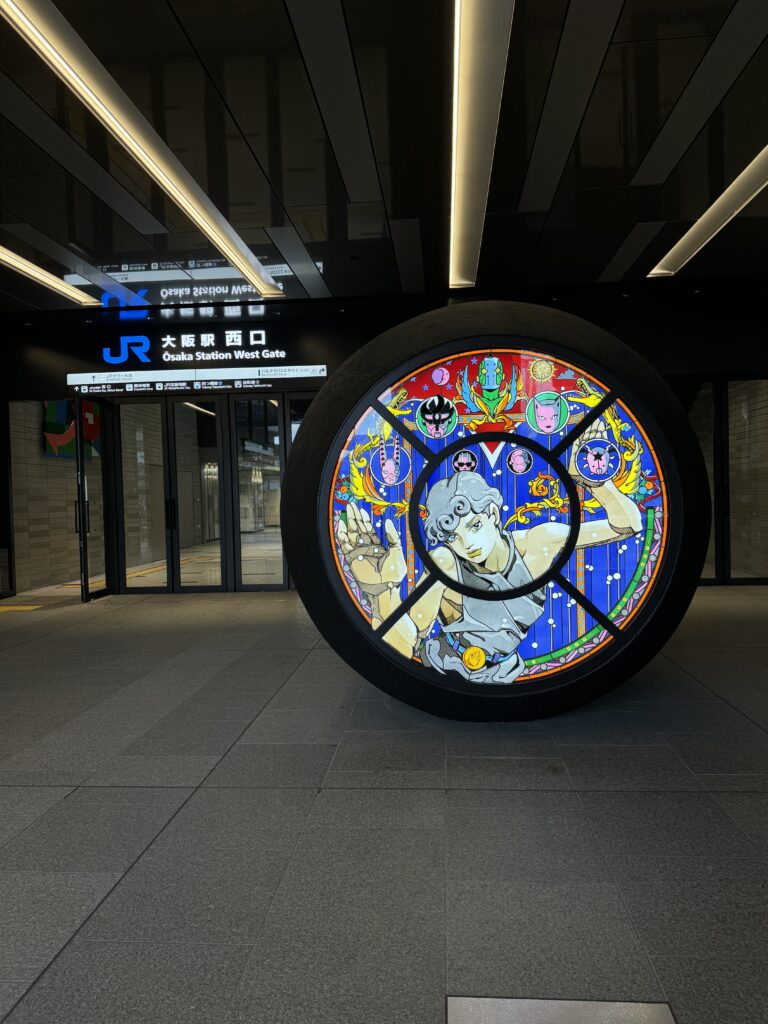
I got to see more of the entrances and exits of Osaka Station City, which, is larger and more complicated than I perceived during my brief visit last year. I am told that compared to its neighbour, Kyoto, Osaka is more upfront, more direct, less of a waltz, more of a tango – think re-mix a la Baz L.
The city has a way more modern face than that of Kyoto, in major part due to the WWII air raids. Osaka Castle, re-built in 1931, was probably one of the few buildings to come out intact. It is quite popular with the tourists, and the queues tend to be for those with a healthy dose of patience and sunscreen. Unless, one’s been wise enough to pre-purchase online tickets. I am not one of those people. I like facing the embarrassment of not knowing how to use a simple ticket machine with courage, and offer people the opportunity to assist, accumulate good karma points, and practice communication.
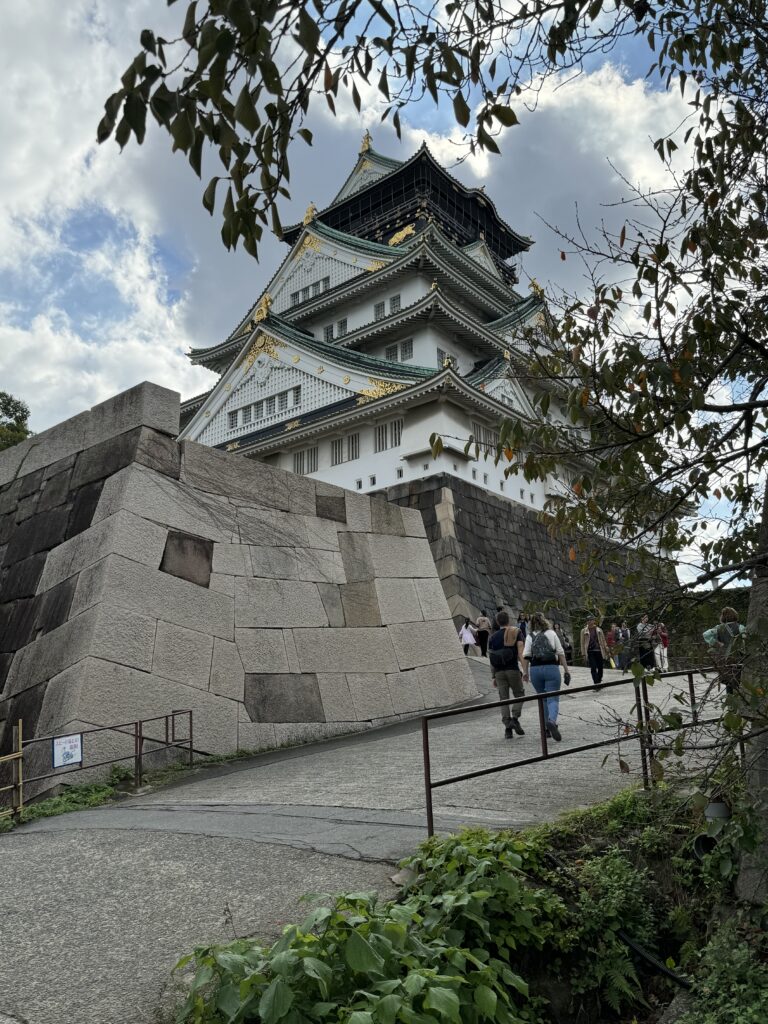
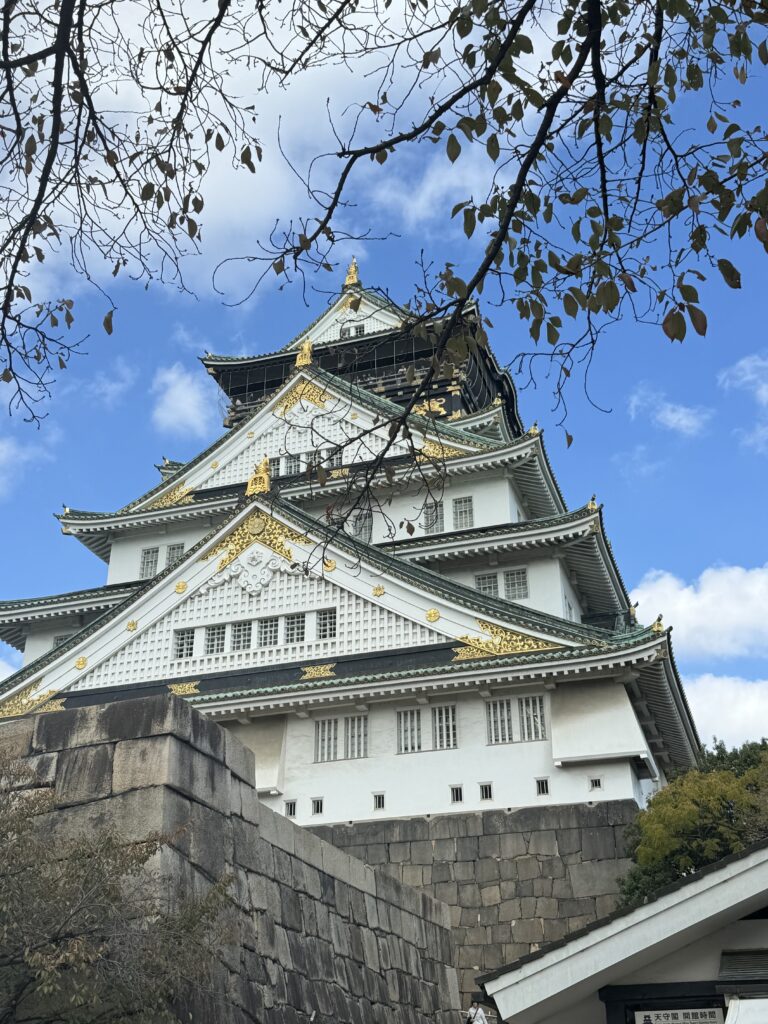
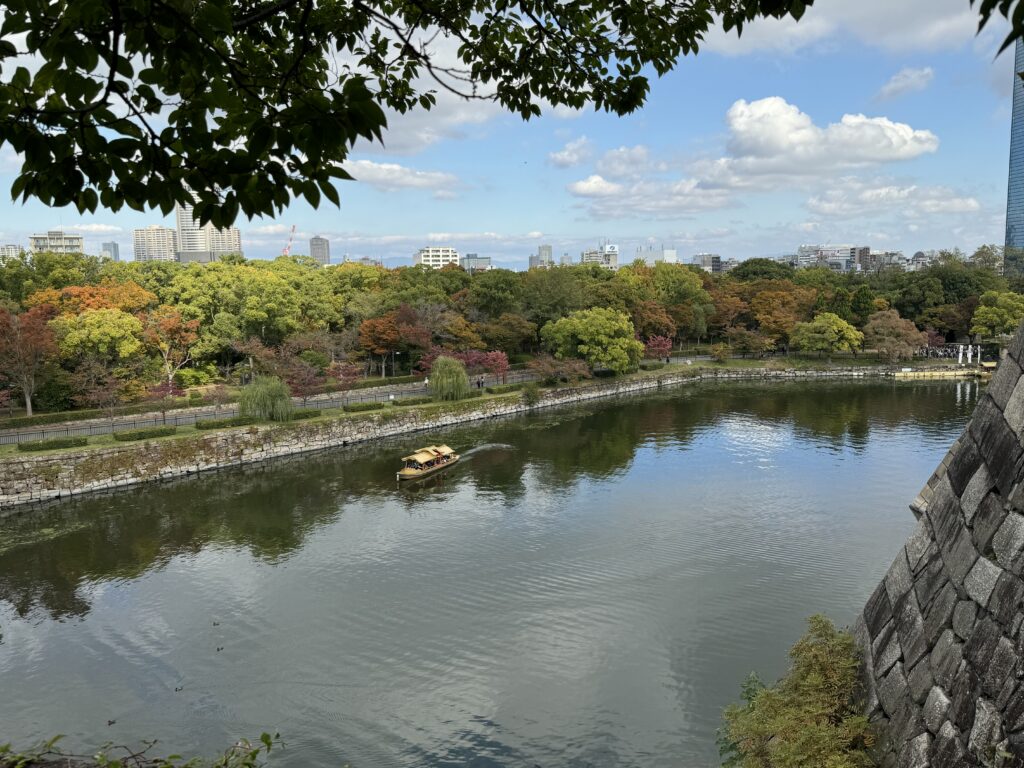
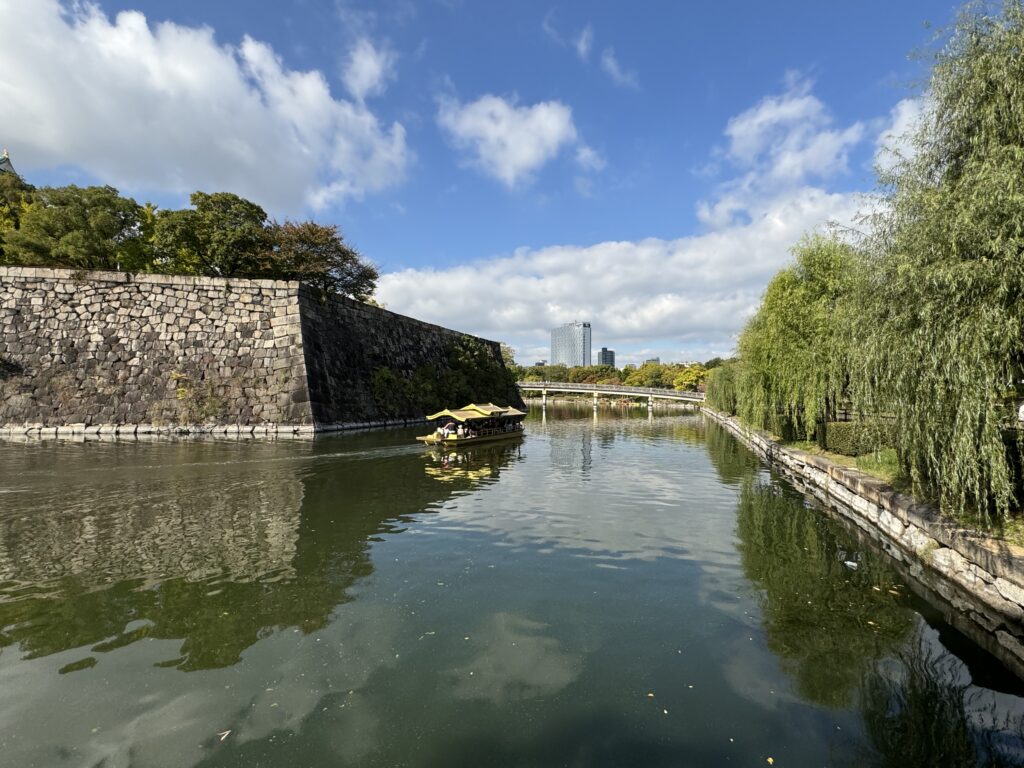

Osaka Castle Park has the look and feel of a mountain village, as a helpful sign tells me. An abundance of trees (one of them an almost yellowing gingko!) like pines, and cherry trees, and Wisteria vines would make this a lovely sight in spring. The area was called Yamazatomaru (Yamazato citadel). When Toyotomi Hideyoshi was still around, he’d take his family out for tea and blossom viewing, and potentially contemplate the passing of seasons and the frailty of life. Then get back to business once that was done.
The castle was burnt down in 1615, soon after Tokugawa’s forces won at the battle of Tennōji. Hideyori, Toyotomi’s heir, and his mother, Yododono, would take their own lives soon after. It was either that, or a surprise visit from the enemy forces in the middle of the night. Alas, it is impossible to know whether there was a way of surviving the practice, but history tells us: ‘no’.
Tokugawa, as it befits a new lord and any replacement power-structure, rebuilt the castle in 1624, into a stronger, taller fortress, with added guard-houses and turrets round the reinforced walls. One can still see photographs of later studies that explore the changes exhibited inside the castle.
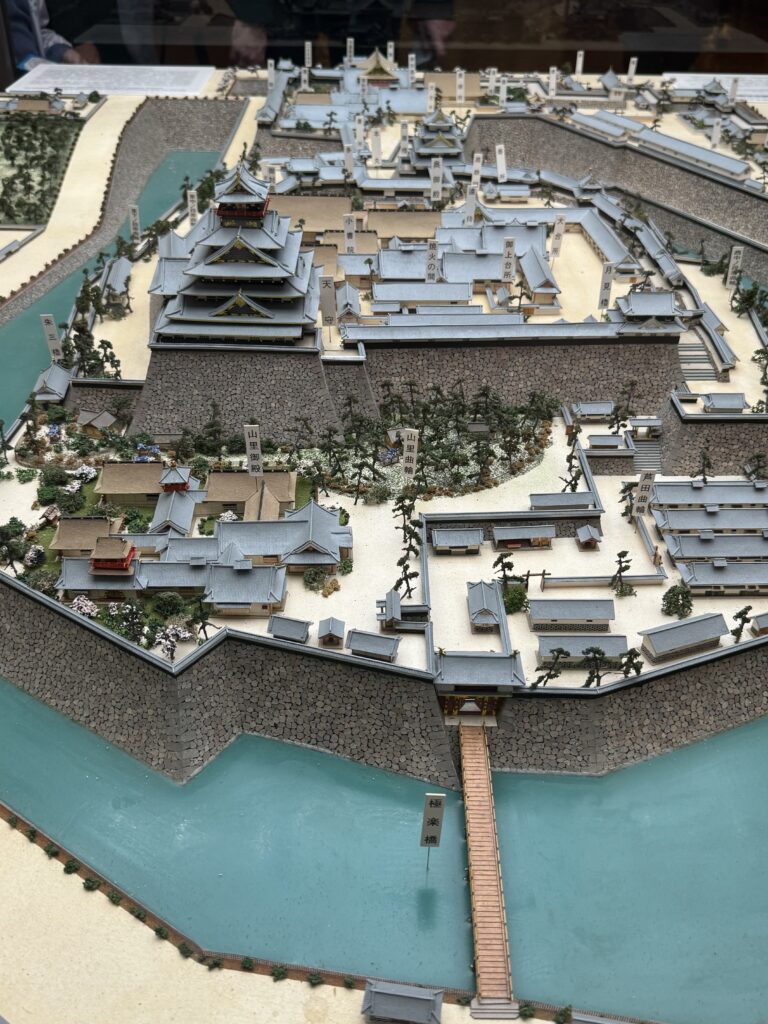
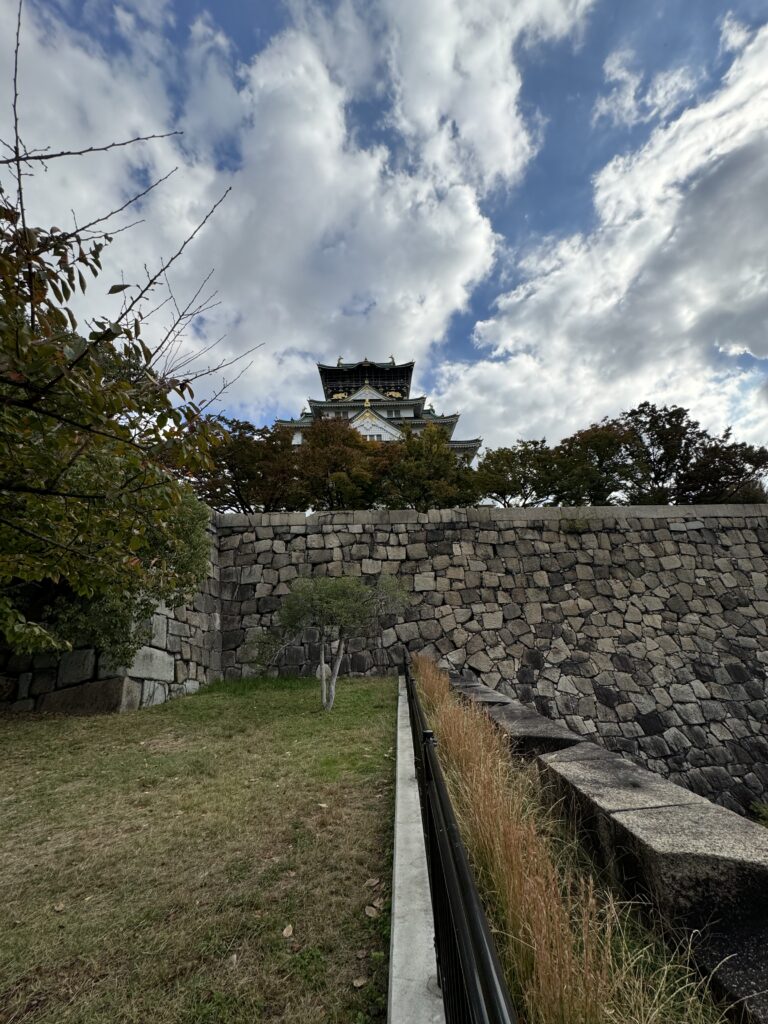
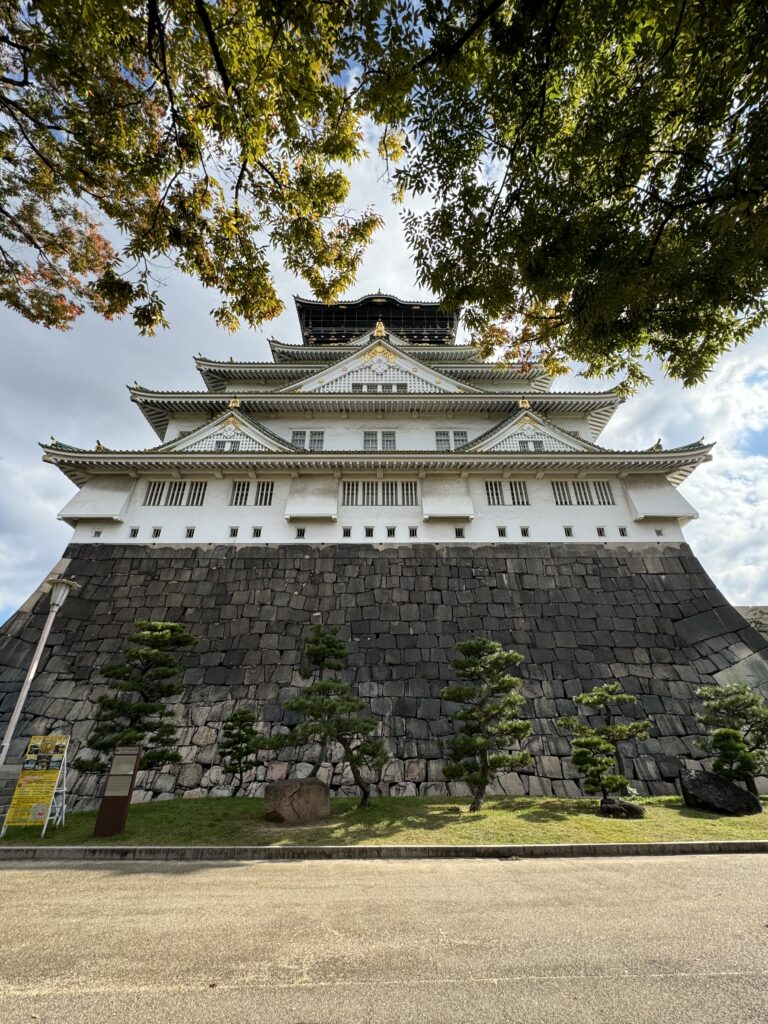

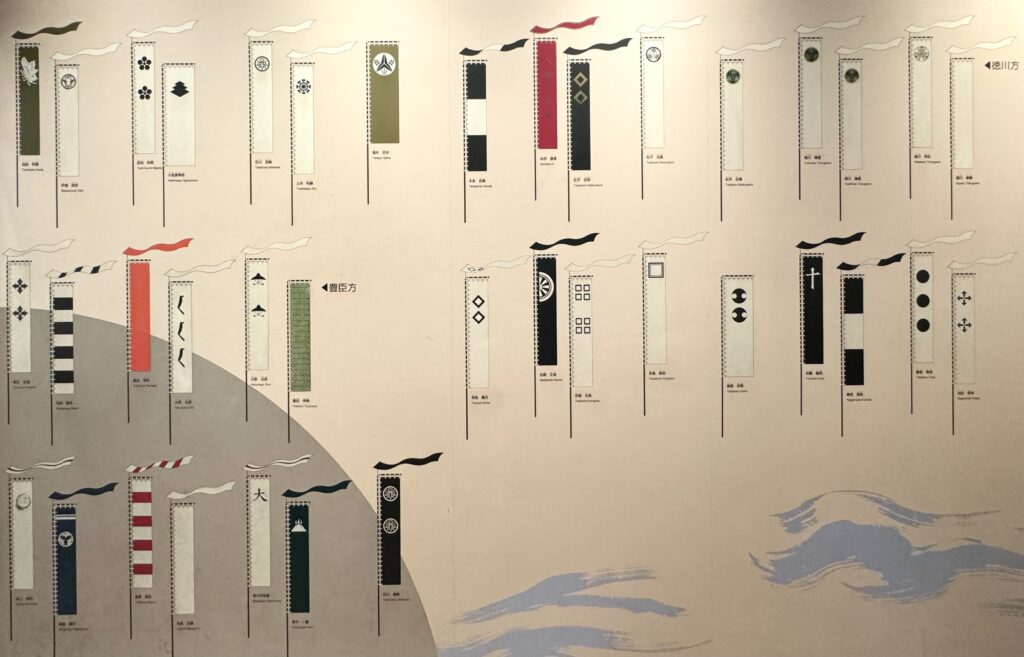
Soon after the castle I headed towards the nearby NHK Osaka Hall, where the museum of
For anyone who takes an interest in architecture, and is a modern (and contemporary) flâneur, this city has many treasures. Think of it as a Puck-Man game, with many levels, and cross the city east and west, north and south, and take snapshots of its wonders. Hope for grey skies or at least a few cotton balls the wind has scattered here and there.
